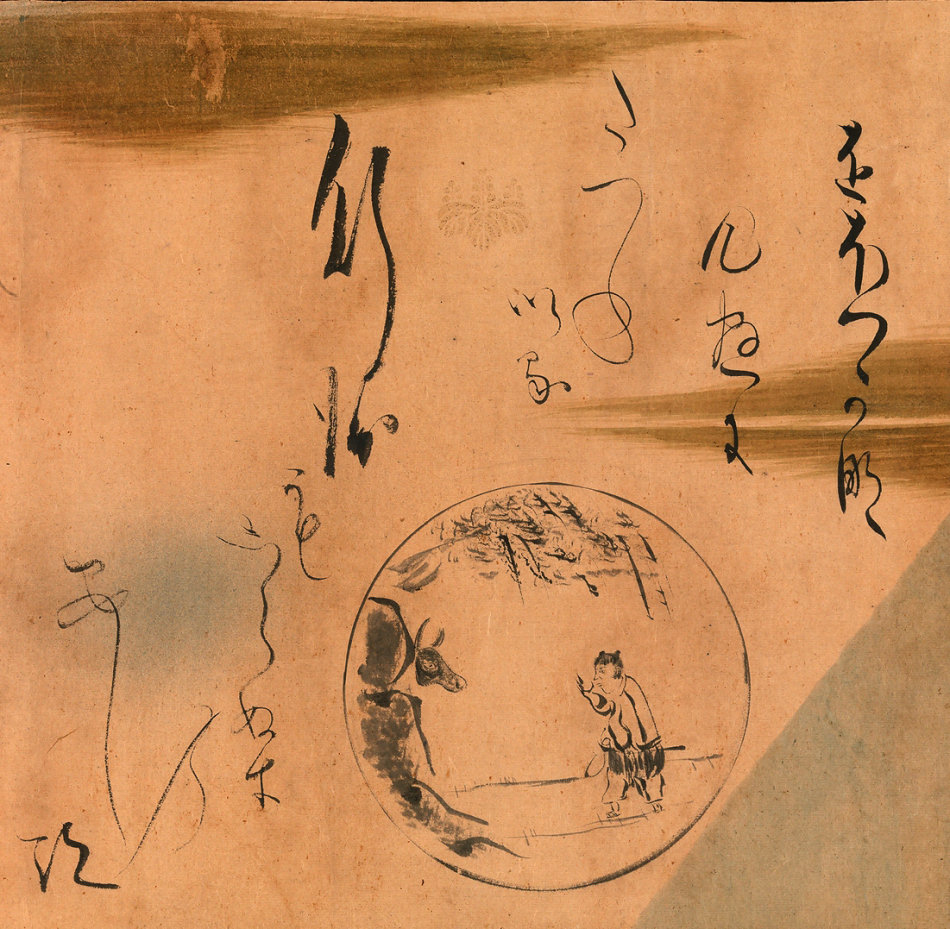ZEN IRODALOM ZEN LITERATURE
« Zen index
« Home
十牛図歌賛図巻 The Ten Ox-Herding Songs
Two horizontal scrolls by Japanese painters:
by 烏丸光廣 Karasumaru Mitsuhiro (1579-1638)
'Bulls' and Zen Bull (Monumenta Nipponica, Winter 1992, Vol 47 Iss 4.)

http://www.metmuseum.org/collection/the-collection-online/search/44761
*(b 1579; d 1638). Japanese courtier, poet and calligrapher of the early Edo period (1600-1868). He was the son of the courtier Karasumaru Mitsunobu (1549-1611) and in 1606 himself became Councillor of State (Sangi) and Minister of the Right (Udaijin). In 1609, shortly after being moved to the post of Minister of the Left (Sadaijin), he was dismissed after a scandalous affair between court nobles and women chamberlains known as the Inokuma Incident. In 1611, having been pardoned by the shogun Tokugawa Ieyasu (1543-1616), he was reinstated and in 1620 he rose to the position of Senior Second Rank (Shonii) and the post of Major Counsellor (Dainaigon). He served as an emissary between court and shogunate and was energetically involved in the construction of the TOSHOGU SHRINE at Nikko.
Ten waka (poems of thirty-one syllables) describing the various stages of spiritual awareness, from the initial search to final realization, are couched in the classic Zen parable Ten Ox-Herding Songs, which likens this vigorous human quest to the often comic vicissitudes of a herdboy in pursuit of an elusive ox. The courtier-calligrapher Karasumaru Mitsuhiro rendered the Zen theme in a style that reflects the aristocratic tradition of personally expressive writing on decorated paper.
The poems, Mitsuhiro's own, are based on a set by a fifteenth-century monk at Tōfukuji, an important Zen temple in Kyoto. Following a common literary practice, Mitsuhiro personalized the poems by making slight changes to their wording, each change alluding to classical sources. Mitsuhiro also subtly altered the standard sequence of accompanying pictures. The style of the calligraphy is influenced by that of Mitsuhiro's teacher, Hon'ami Kōetsu (1558–1637), who with Mitsuhiro was instrumental in reviving the aesthetics of Heian-period (794–1185) art in the early seventeenth century.
Mitsuhiro was a major figure in the circle of the politically enfeebled but artistically influential Emperor Go-Mi zunō-ō (1596–1680).

一、寻牛

二、见迹

三、见牛

四、得牛

五、牧牛

六、骑牛归家

七、忘牛存人

八、人牛俱忘

九、返本还源

十、入廛垂手